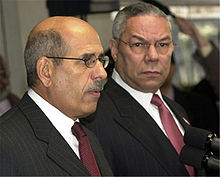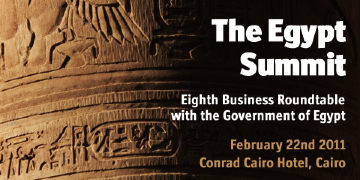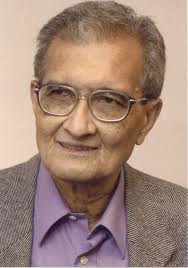Bangladesh government has planned to stop beggars from begging in the streets of Dhaka and Chittagong cities ahead of ICC World Cup, the country's largest sporting event, due to start at Dhaka on 19 February which is also being co-hosted by India and Sri Lanka. Hawkers will also be shunted out to ensure that there are no security glitches during the event. Bangladesh Home Minister Sahara Khatun told reporters that the beggars would be taken to rehabilitation centers.
More interestingly, the mayor of Chittagong metropolitan city Manzurul Alam said his city office will pay each of the disabled beggars up to Taka 150 a day to keep the local beggars off the streets in the port city during the prestigious ICC World Cup event. Mr. Alam said: "Initially, defraying the daily allowance for the beggars will continue for three months till end of April. And we are planning to permanently rehabilitate them."
Undoubtedly, these are nice plans of the government to make a clean sweep of the beggars who nag people on the roads for Taka and even for Dollar when they find a visiting foreigner on a car or on the street. Dhaka city will wear a clean and neat look with no beggar crowding at the traffic stops. The footpaths would be tidy and orderly for one to walk on with the hawkers shunted out.
With beggars to be cleared off the streets in Dhaka and Chittagong cities thousands of cricket fans and aficionados from different parts of the world who will be flocking Bangladesh---some of whom visiting the country perhaps for the first time in their life---will not at least have registered in their memory a bad image of maimed beggars nagging while they would be staying in our country as our valued guests.
But, beggars will verily return to the streets immediately after the ICC event is over and the foreign guests are gone. I can vouch for any bet under the sun that the beggars in Bangladesh are not going to disappear anytime soon. Beggars were, beggars are and beggars will always be there everywhere. There are beggars all over the world. Begging is a very old profession. Sometimes begging is also a sacred ritual in some religions. Bangladesh would never be free from beggars even if this country in a near or distant future becomes a Saudi Arabia or a Malaysia.
About 700 thousand people in our country are eking out their living from begging. Out of this vast population of beggars a great portion were abducted and maimed when they were young. Their job is only to solicit pity and beg from people. At the end of the day many of these beggars have to hand all the alms and charities they have earned from kind people to the beggar mafia leaders in exchange of a shelter or morsels of stale food or perhaps for free drugs and alcohols.
Beggars in a decent society usually keep mum sitting under a shade or at a corner of a sidewalk placing before them a hat with its upside down or a pot hung around their shoulders wherein kind-hearted passers-by drop a bill or a coin. But the style of Bangladeshi beggars nagging persistently and begging persuasively---at times aggressively---is unnoticed elsewhere in the world other than in the India-Pakistan-Bangladesh subcontinent.
A maimed Bangladeshi beggar crying despicably and chasing a foreigner on a road incessantly leaves with anybody, especially with a tourist, a very uncouth impression about our people.
We are happy to learn the government at the behest of the Supreme Court is about to take some measures to get rid of the menace of beggars. Beggars may soon be rehabilitated in homes for the homeless as the cabinet already approved a draft in this regard. Prime minister also assured that beggars' problem would be seriously addressed; she informed that the formulation of Vagabond and Unsheltered Persons (Rehabilitation) Bill 2010 is going to be passed very shortly.
But solving the intractable beggars' problem may not be easy in a poor country like ours where there are not enough employment opportunities even for the educated and the able-bodied persons, let alone for the disabled beggars. Our neighboring country India has also been facing the same problem with beggars and the problem there is far from over. Plus, begging is a commercial business worth multimillion dollar in this subcontinent run by powerful beggar mafias. Indian mafias are making more than US Dollar 30 million a year in Mumbai alone.
The beggar mafias have also grown in Bangladesh doing their roaring businesses as has been proven time and again. According to official figures, as many as 45,000 children fall into the traps of beggar mafias in India each year. According to an unofficial rough estimate, every year not less than 5,000 Bangladeshi children are abducted by the Bangladeshi beggar mafias which may have syndicated links with their Indian counterparts for cross border trading of abducted and maimed children. The job of such mafias is to abduct, drug, maim and force the children to beg at designated places that are assumed to be guarded and controlled by mafia leaders.
It won't be a surprise if it is found that a great number of elements in political domains and law enforcement agencies are also involved in the lucrative businesses of the beggar mafias as has been made apparent by the recent High Court's directive to immediately suspend sub-inspector of Kamrangirchar police station Nurul Alam for his trying to save a gang involved in maiming a seven-year old boy Neyamul in their attempt to engage him in begging. As has been reported in the press, gang leader Faruk in collusion with their cohorts Korban, Ramjan, Russell, and Saddam had chopped off the penis of Neyamul, son of a rickshaw-puller.
A human rights organization and a private television channel did a commendable job by uncovering the gruesome story of Neyamul. RAB also played a heroic role in nabbing some of the mafia gangsters in Kamrangirchar, near Dhaka city. According to a news report, one of the arrested suspects Shariful Islam, alias Korban, told interrogators how he and his accomplices used to abduct children, confine them in cramped spaces for days together in near-starvation to weaken their mental strength and develop dependability on the gangsters, the way animals are trained to perform in a circus. Korban also confessed about killing male partners of couples who went out for evening walks at Beribadh and abducting the female partners for prostitution.
According to a report published recently in a Bangla newspaper, one RAB official came to know from one Faruq, now under police custody, that many gangsters, some of whom are members of powerful political parties, who are involved in this gruesome business of beggar mafia, have already fled away after their den in Kamrangirchar was detected. One of the gangsters, according to the news report, is a notorious criminal named Solaiman Matbar against whom there are numerous criminal charges like murder, abductions, extortion, land-grabbing and smuggling. Under Solaiman, the report said, there is a network of dozens of agents who are engaged in abduction and maiming of children who are later forced either to begging or to prostitution.
Children of the India-Bangladesh-Pakistan subcontinent are victims of "Beggar Mafia". The mafia gangsters are so violent and amoral and so blind and intoxicated in their spree of making money out of commerce of begging and prostitution that they are ruthlessly stealing new-born babies from hospitals and, like the butchers slaughtering animals, are hacking the limbs off male children. They are forcing the female children into prostitution at their tender age.
Hundreds of young children in India and Bangladesh are having their limbs chopped off, their eyes gouged out and their limbs made full of suppurating wounds out of acids poured on their bodies. A child abducted in most cases is maimed with the aid of an unscrupulous doctor who is paid by mafia gangsters to amputate one of the child's healthy hands or legs.
Not all the abducted children are maimed for begging; some are forced into child pornography and used as sex slaves and others who are suitable neither for begging nor as sex slaves are perhaps killed and have their organs like kidneys sold to middlemen for transplantation purposes.
Scattered all over Bangladesh, there are thousands of victims like Neyamul who are helplessly finding their limbs amputated at the hands or the directions of hundreds of mafia leaders and workers like Solaiman, Korban, Ramjan, Russell, and Saddam. Tales of victims that we read and hear in newspapers and television channels are only a molehill of a few painful stories compared to a mountain of more heartbreaking and more excruciating tragedies and agonies that are untold, unheard and uninvestigated.
Just imagine how the parents of these abducted children are now passing their days. Just imagine, your own child has similarly been abducted, beaten, starved, drugged and lastly maimed to be forced into begging or prostitution. Just visualize the innocuous and hapless face of your own child fallen in such a trap and try to hear his or her screams and groans: "Don't beat me please; don't cut my leg, please. Abbu, Abbu, Ammu, Ammu. Save me, please".
Hundreds, maybe thousands, of children are thus being crippled so they look helpless evoking pity among people and become potential earners of alms. The perpetrators know that the more a child is tortured and tormented the more unfortunate s/he would look. To a beggar mafia a child with the worst injuries is his prize earner as s/he can melt the hearts of the sympathetic passers-by. These young beggars are trained to learn how to choose the most appropriate place to beg in, the kind of people to approach and the kind of mannerism to mimic to make people sympathize. These children are tutored how to make their appearance as pitiful as possible to get money from people like elderly men and women who they would assume as soft-hearted.
One may now wonder why not the child beggars just flee away from the streets to escape from their traumatic life or why not the human rights people pick these helpless children for their rehabilitation! Yes, that was also exactly my question when in 2009 I myself had tried to persuade a child beggar at Purana Paltan into quitting his begging. Later, after I googled different sources to learn about a variety of tricks the mafia leaders adopt to control their agents and indentured workers it has became clear why the young beggars would keep mum if you approach them to forsake their painful life on the streets and do something else for a better living.
According to norms practiced by mafia leaders, the abducted children are first made dependent on drugs or alcohols. Physically maimed children are drugged to be maimed also mentally before they are sent on to the streets for begging, always with someone of the gang overseeing their movements. These crippled children desperately beg all day long and go home in the evening with a hope that they would be getting something that their addicted body and mind needs. They rather prefer hunkering down beside their mafia lords to leaving their begging profession.
Continuous intake of drugs causes their brain not to function normally. These children engaged for begging, whether mutilated or not, are gradually and fully addicted to drugs, solvents, alcohols and hashish laced with opium. They become physically and mentally dependent on the supply of the intoxicating substances their masters provide for them free of cost. They are thus under full control of their bosses.
Some children who know that they were maimed by their bosses are also too terrified even to speak out the truth; instead of blaming their masters for their mutilated body they would rather say their limbs 'just disappeared' or they would blame untrue 'accidents'. If law enforcement people try to catch them for their rehabilitation they would just flee away, lie low, bide their time and return eventually to their used livelihood of begging. No other pathways are open to them.
Of course, not all the beggars we find on the streets are domesticated or indentured workers of the beggar mafias. Many of the begrimed men, old women with matted hairs and children with disabilities and sores stretching out their palms peremptorily and soliciting our charity are actual beggars. Many children beg because their parents who cannot feed them send them out to beg. Many parents of these children are destitute, very ill or disabled. And, a great number of adult beggars are congenitally disabled and frail or suffering from stigmatized ailments like leprosy or mental sickness which debars them from normal work. They are too weak even to sing or make a monkey dance or offer an article for sale for a living. They are genuine beggars. They need our attention. They need to be rehabilitated in destitute homes in the first place.
http://www.weeklyblitz.net/1251/commerce-of-begging
 The intervention of the court to find out what really transpired that led to the hanging of Col. Taher is welcomed. It is significant not just because Taher was a man of history with many followers and admirers but also because his death is still shrouded in mystery. Not only do we not know yet if there were major violations of the rule of law and due process in the trial but as many have said, it could well be a `judicial murder'. Where the court was used and in this case, a military court to try a civilian no matter whose actions involved soldiers of the army. Taher is dead but the people have a right to know what happened.
The intervention of the court to find out what really transpired that led to the hanging of Col. Taher is welcomed. It is significant not just because Taher was a man of history with many followers and admirers but also because his death is still shrouded in mystery. Not only do we not know yet if there were major violations of the rule of law and due process in the trial but as many have said, it could well be a `judicial murder'. Where the court was used and in this case, a military court to try a civilian no matter whose actions involved soldiers of the army. Taher is dead but the people have a right to know what happened. 





